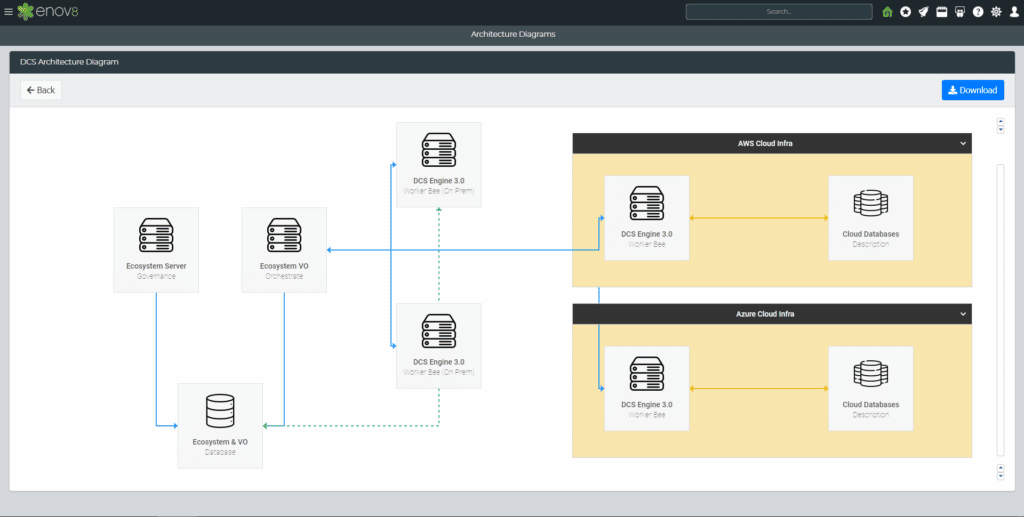
Software development is a complex process that involves multiple stages and teams working together to create high-quality software products. One critical aspect of software development is testing, which helps ensure that the software functions correctly and meets the user’s needs.
To perform effective testing, developers need a dedicated environment where they can test the software in a controlled and isolated environment.

This is where the QA environment comes in. In this beginner’s guide, we will explore what a QA environment is, why it’s important, and how to build and maintain one. Whether you’re a software developer, a tester, or a project manager, understanding this environment is critical to delivering high-quality software products.
What is a QA Environment?
A QA environment (or test environment) is a dedicated environment used for testing software applications. It’s a controlled and isolated environment that mimics the production environment, where the software will ultimately run.
QA environments typically include hardware, software, network configurations, and test data that are similar to the production environment, allowing testers to evaluate the software’s behavior in a realistic environment.
The purpose of this environment is to provide a controlled environment where testers can test the software without interfering with the production environment. In other words, a QA environment is a safe place where testers can identify and fix any bugs, errors, or issues that might arise during testing without affecting the end-users.
The environment typically includes the following components:
- Hardware: The physical machines or servers required to run the software.
- Software: The applications and tools needed to run the software and perform tests.
- Network: The network configuration needed to connect the hardware and software components together.
- Test data: Realistic data that represents the input and output of the software system.
The test data is a critical component of a QA environment because it allows testers to simulate real-world scenarios and ensure that the software behaves as expected. The test data should include a variety of scenarios, including edge cases and error conditions, to ensure that the software can handle unexpected situations and be masked to avoid sensitive data being disclosed.
In summary, a QA environment provides a safe and isolated space for software testing, allowing testers to identify and fix issues before the software is deployed to the production environment. It should include hardware, software, network configurations, and test data that closely resemble the production environment to ensure accurate and realistic testing.
Enov8 Environment Manager, Environment Blueprinting: Screenshot

Types of QA Environments
There are several types of test environments, each serving a specific purpose in the software development life cycle. The following are the most common types of QA environments:
- Development Environment: This environment is used by developers to build and test software before it’s deployed to the testing environment. It’s typically used for unit testing and integration testing.
- Test/QA Environment: This environment is used for comprehensive testing of the software to ensure that it meets the user’s requirements. It’s typically used for system testing, acceptance testing, and performance testing.
- Staging Environment: This environment is used to test the software in a production-like environment before it’s deployed to the production environment. It’s typically used for user acceptance testing and to validate the deployment process.
- Production Environment: This environment is the live environment where the software is deployed and used by end-users.
Each type of QA environment serves a specific purpose in the software development life cycle and requires specific hardware, software, network configurations, and test data. It’s essential to carefully plan and execute the setup of each environment to ensure that the software is tested accurately and efficiently.
Building a QA Environment
Building a QA environment can be a complex and time-consuming process, but it’s a critical step in ensuring that the software is tested accurately and efficiently. The following are the essential steps to build one.
1. Define the QA environment requirements
The first step is to define the requirements of the environment. This includes hardware, software, network, and test data requirements. The requirements should be based on the software specifications and should closely resemble the production environment.
This is a good time to draw your environments, or as we call it Environment Blue Printing.
2. Choose the hardware
The hardware components needed for the QA environment should be carefully selected based on the requirements. The hardware components should include servers, workstations, storage devices, and network equipment.
3. Install the Software
Once the hardware components are selected, the software components needed for the environment should be installed. This includes operating systems, application servers, web servers, databases, and testing tools.
4. Configure the Network
The network configuration for the environment should be carefully planned and implemented. This includes network topology, IP addressing, and firewall rules.
5. Populate the Test Data
The test data should be populated with realistic scenarios that closely resemble the production environment. This includes data for unit testing, integration testing, and user acceptance testing.
6. Test the Environment
Once the environment is set up, it should be tested thoroughly to ensure that it’s functioning correctly. This includes testing the hardware, software, network, and test data.
7. Maintain the Environment
The QA environment should be regularly maintained to ensure that it’s up-to-date and reflects the current state of the production environment. This includes patching, updating, and monitoring the hardware and software components.

Quick Tips: Use Runsheets to Standardise & Support Repeatability. And use Environment Automation to streamline the tasks.
Maintaining a QA Environment
Maintaining a QA environment is an ongoing process that requires regular updates, monitoring, and management. The following are some of the essential steps for maintaining one:
- Regular backups: Backing up the QA environment regularly is crucial in case of any data loss or corruption. The backups should include all the software, test data, and configurations needed for the environment.
- Regular updates: The hardware and software components of the environment should be regularly updated to ensure that they are up-to-date and secure. This includes updating operating systems, applications, and testing tools.
- Monitoring: The environment should be monitored regularly to ensure that it’s functioning correctly. This includes monitoring performance, resource utilization, and network connectivity.
- Security: The environment should be secured to ensure that it’s not vulnerable to any security threats. This includes implementing firewalls, antivirus software, and access controls.
- Environment Management Tools: Using QA environment management tools like Enov8 Environment Manager can simplify the maintenance process. These tools provide a centralized dashboard for managing all the components of the environment, including hardware, software, network configurations, and test data. They can also automate the process of updating, monitoring, and securing the environment.

Conclusion
In conclusion, a QA environment is a crucial component of the software / system development life cycle. It provides a controlled environment for testing the software before it’s deployed to the production environment. The environment includes hardware, software, network configurations, and test data that closely resemble the production environment.
There are different types of QA environments, including development, staging, and production environments, each with its specific purpose and characteristics. Building an environment requires careful planning and execution, including defining the requirements, choosing the hardware and software components, configuring the network, and populating the test data.
Maintaining a QA environment is an ongoing process that requires regular updates, monitoring, and management. Environment management tools like Enov8 Environment Manager can simplify the maintenance process and provide a centralized dashboard for managing all the components of the environment.
In conclusion, a well-designed and maintained QA environment can ensure that the software is tested accurately and efficiently, resulting in high-quality software that meets the user’s needs.

Post Author
Jane Temov is an IT Environments Evangelist at Enov8, specializing in IT and Test Environment Management, Test Data Management, Data Security, Disaster Recovery, Release Management, Service Resilience, Configuration Management, DevOps, and Infrastructure/Cloud Migration. Jane is passionate about helping organizations optimize their IT environments for maximum efficiency.
